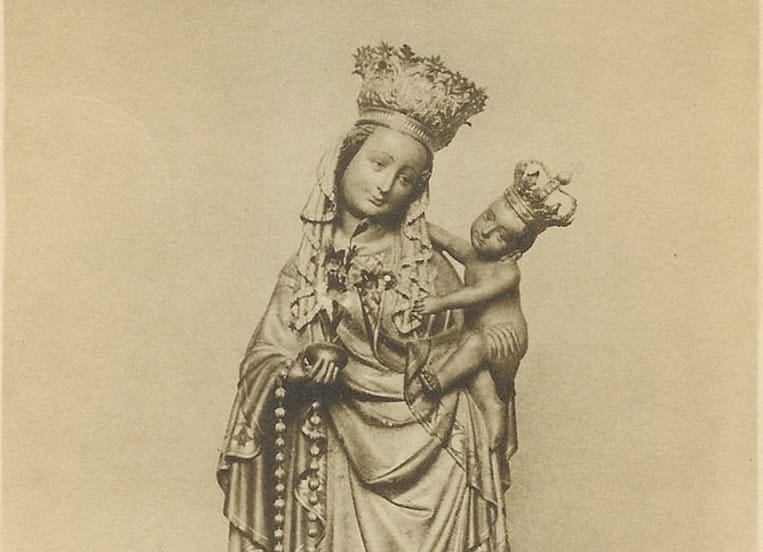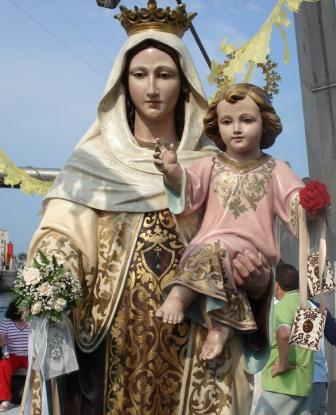Stella Maris

The Virgin Mary assumed many of the attributes once assigned to Aphrodite and the ancient pagan goddesses - not the nudity or the sexuality of course, but the idea of being borne in the sea foam. Around the year 400 St. Jerome wrote that Mary was "stilla maris," a drop of the sea, a human woman in the vastness of God’s creation. Somewhere along the way the term was miscopied as “stella maris,” meaning “Star of the Sea” which sounded a whole lot better. Certainly, by the 9th century, this was the accepted meaning, and the Virgin Mary became identified as the protector of those traveling on the sea and of many coastal churches.
The image below is from a procession in Barcelona, Spain, dedicated to Our Lady of Mount Carmel, known locally as Nuestra Señora del Carmen.

The metaphor of life’s journey across the sea always has been a powerful one. As the 12th-century Saint Bernard of Clairvaux put it: "If the winds of temptation arise; If you are driven upon the rocks of tribulation look to the star, call on Mary; If you are tossed upon the waves of pride, of ambition, of envy, of rivalry, look to the star, call on Mary. Should anger, or avarice, or fleshly desire violently assail the frail vessel of your soul, look at the star, call upon Mary.”
Also see Botticelli's The Birth of Venus and Istanbul's logo below.

